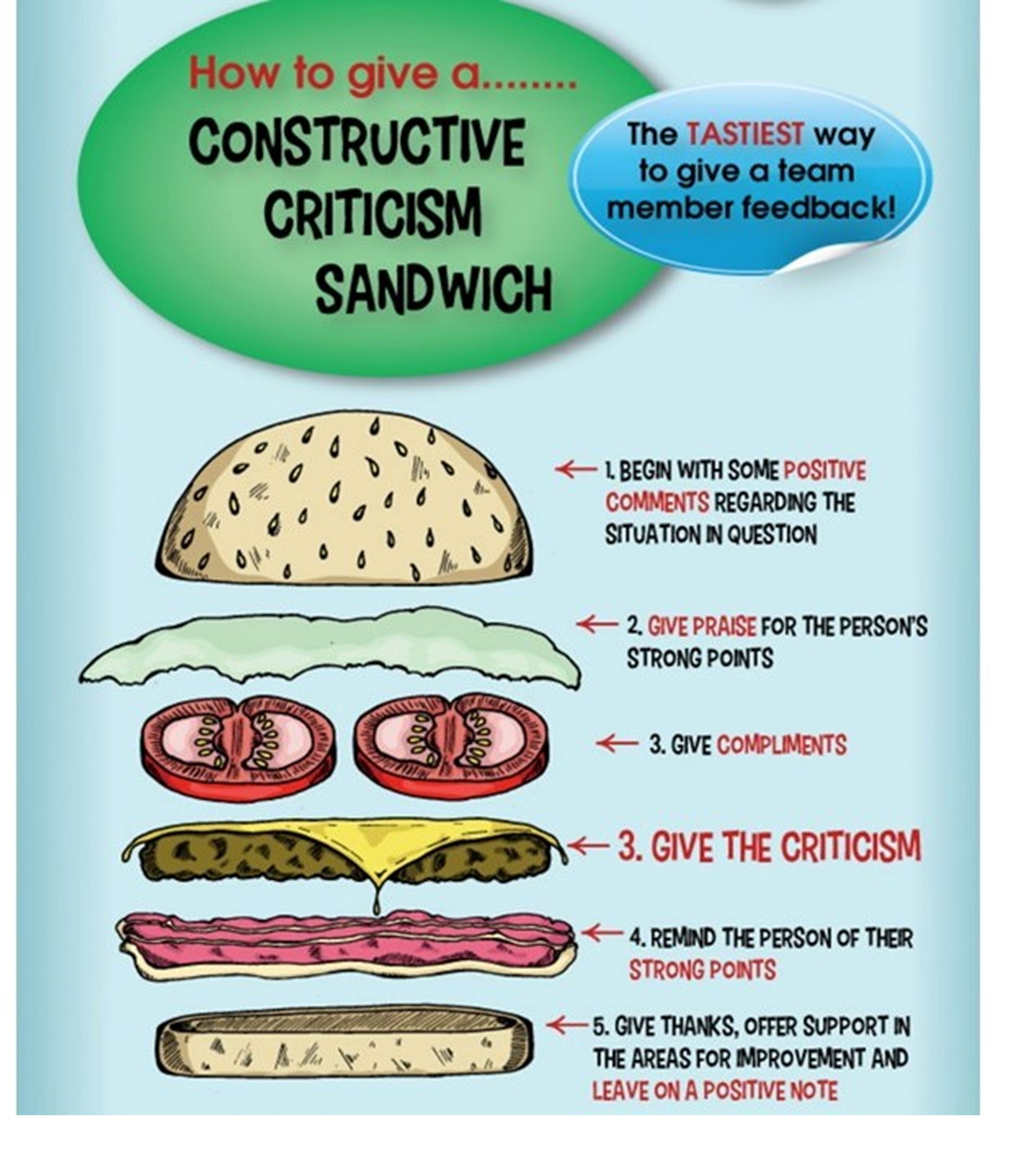
Constructive Criticism: An Essential Tool for Professional Growth
5 minute readConstructive criticism can be a highly beneficial asset in the workplace, fostering a positive atmosphere and encouraging employees to solicit support and present their opinions and suggestions. Constructive criticism is different from other forms of criticism because it provides specific, actionable suggestions that can be implemented. In addition, it focuses on the situation rather than the person, being clear and to the point.
Constructive Criticism vs Destructive Criticism
Constructive criticism is a type of feedback which is an integral part of any learning process. It can help someone to identify areas for improvement and develop strategies to reach their goals. Constructive criticism should be specific, actionable, and delivered respectfully. It should also include an action plan that outlines steps for improvement. This criticism encourages growth and learning while providing the person with the tools they need to succeed.
On the other hand, destructive criticism is not intended to help someone improve or grow. It is often vague and hypercritical, with no actionable advice or plans for improvement. Destructive criticism can be discouraging and damaging to self-esteem, as it is usually delivered harshly without regard for feelings or emotions. If you encounter destructive criticism, it's important to shut it down and seek out constructive feedback from a mentor or trusted advisor instead.
The benefits of constructive criticism
Giving constructive criticism can help employees set and achieve work goals. It allows them to identify areas of improvement and develop strategies for success. Receiving constructive criticism can also be beneficial as it allows growth and development. By listening to the feedback given, employees can learn from their mistakes and make changes that will lead to better performance in the future. Constructive criticism is a valuable tool that should be used in any workplace setting as it encourages open communication between staff members, promotes personal growth, and helps employees reach their goals.
How to give Constructive Criticism
Constructive criticism is an integral part of any successful relationship, whether it's between colleagues, friends, or family. It can help to improve performance and strengthen relationships. However, providing productive and not emotionally charged constructive criticism can be challenging.
Focusing on behaviour rather than the person is essential when offering constructive criticism. Start by listening to what the other person says and ask questions if you are unclear about anything they have said. Show empathy for their point of view and explain why you think a different approach might be beneficial. Once you have established a mutual understanding, create an improvement plan with objectives to help them reach their goals. Make sure to provide support throughout the process and celebrate successes. With practice, you can learn how to give constructive criticism in a way that is effective and respectful for everyone involved.
1. Keep It Private
Giving constructive criticism in the workplace should always be carried out privately. Public feedback displays can lead to destructive criticism, making the person being criticised feel attacked or publicly shamed. In addition, providing individual feedback in a group setting should be avoided, as it can create an uncomfortable atmosphere and put the person you're criticising on the spot. Instead, it is best to have the conversation privately so they are more at ease and more open to your feedback.
Praising in public and criticising in private is a great way to ensure everyone feels respected and valued. And facilitates productive discourse among colleagues without the concern of humiliation or embarrassment. However, when delivering constructive criticism, it is essential to maintain appropriate body language, respect, and empathy for the recipient. In addition, criticising someone in front of others can lead to feelings of shame or inadequacy, so it is essential to keep these conversations private for the best results.
2. Consider the timing
It is recommended to provide small, specific and frequent feedback rather than storing comments and delivering them all at once. This approach helps ensure that employees are aware of their performance in real time, allowing them to make adjustments if necessary. Additionally, always be conscious of timing when giving feedback; avoid critiquing someone's performance immediately after they've completed a task, as this could lead to defensiveness or resentment. On the other hand, timing can determine whether the recipient is receptive to your comments, so it's important to get it right.
3. Be Specific
Constructive feedback is an integral part of any workplace. It helps employees understand what they are doing well and what areas need improvement. When giving constructive feedback, it is vital to be specific in positive and negative comments. Generic statements such as "great job" or "nice work" do not provide meaningful compliments that show you have taken the time to observe their work.
When providing negative criticism feedback, specificity is critical. Vagueness does not help the employee understand what needs to be improved. Instead of making general statements, provide specific examples that illustrate the issue. As a result, the employee better understands what needs to be done to improve their performance. Additionally, it is crucial to focus on solutions rather than just pointing out problems. By offering suggestions for improvement, you can help the employee better understand how they can improve their performance in the future.
4. Don't Make It Personal
When addressing employee issues, it is crucial to focus on the actions, not the person. Making assumptions about an employee's personality can lead to misunderstandings and hurt feelings. Instead, it is best to provide constructive criticism and, where appropriate concrete examples that focus on the issue at hand and how the employee can improve their performance in a structured way. This approach will help them understand what needs to be done without feeling attacked or judged.
It is also essential to avoid making broader claims about a person's character when giving feedback. If individuals perceive a personal attack, they are likely less open to listening and establishing trust. It is better to approach any situation with respect and understanding so that both parties can work together towards a solution. Employees are more likely to take your feedback seriously and make positive changes in their behaviour or performance by keeping things professional and avoiding personal attacks.
5. Don't Forget the Positive
Receiving positive feedback is essential to creating and maintaining a productive and successful workplace. It helps to motivate employees, builds trust between managers and their teams, and encourages a culture of growth and development.
When giving constructive criticism, providing positive and negative feedback is crucial. Negative feedback should be honest but include some positives to help motivate the individual. Positive feedback should include specific praise and suggestions for improvement or ways to build upon the work in the future. This will help employees feel valued and appreciated while understanding what needs to be done differently to improve their performance. Don't forget the positive when giving feedback – it can make all the difference and lead to positive improvements!
6. Place emphasis on the activities or behaviour.
When delivering constructive criticism, focusing on the action or behaviour that needs improvement is essential. Using non-specific language such as "the numbers" or "the performance" instead of "your numbers" or "your performance" can It is essential to maintain focus on the issue in discussion and to avoid making it a personal matter. Ensure you keep the conversation focused on the issue at hand rather than making it personal.
7. Provide actionable feedback
Providing actionable feedback to employees is essential to helping them improve their performance, productivity, and skills. It is important to focus on one area of improvement at a time to avoid overwhelming the employee. A development plan should be created with an action plan outlining mandatory tasks and extra tasks to help monitor progress and identify any time management issues. The feedback should be something the employee can implement to improve their performance, productivity, skills or other areas. Creating a daily checklist or spreadsheet can also be beneficial for outlining urgent tasks, essential tasks and nice-to-have tasks.
Working with employees to create a development plan so that they have tangible feedback is vital to have appropriate feedback during the employee review.
8. Use the Feedback Sandwich Method
The Sandwich Method can be an effective way of providing constructive criticism while still maintaining a positive atmosphere. However, some leaders find this method harmful and deceitful, so they must consider their workforce's behaviour when deciding whether to implement it. Leaders should also remember that it is crucial to focus on improvement rather than just pointing out mistakes for this method to be successful.
Reviewing the article shows that providing constructive criticism is a valuable skill to possess. It allows individuals to learn and grow while also helping build strong relationships. Constructive criticism should be specific, timely, and mindful of the recipient's feelings. By practising compassion and being mindful of the recipient's experience, giving constructive criticism can be a positive and relationship-building experience for both parties.

